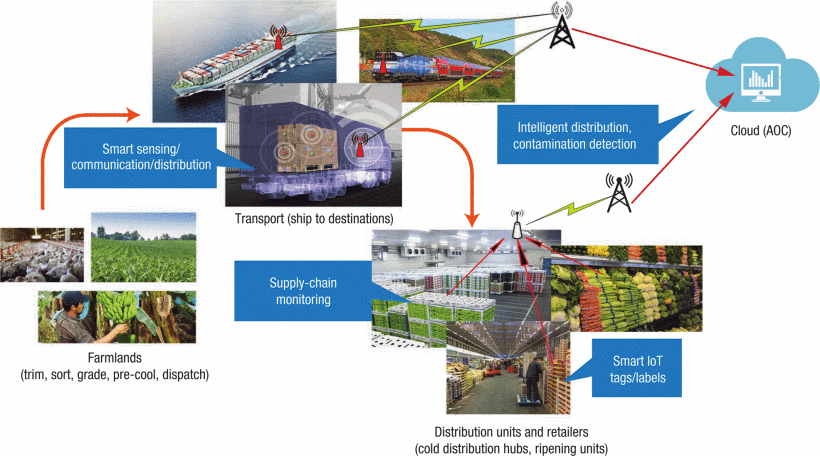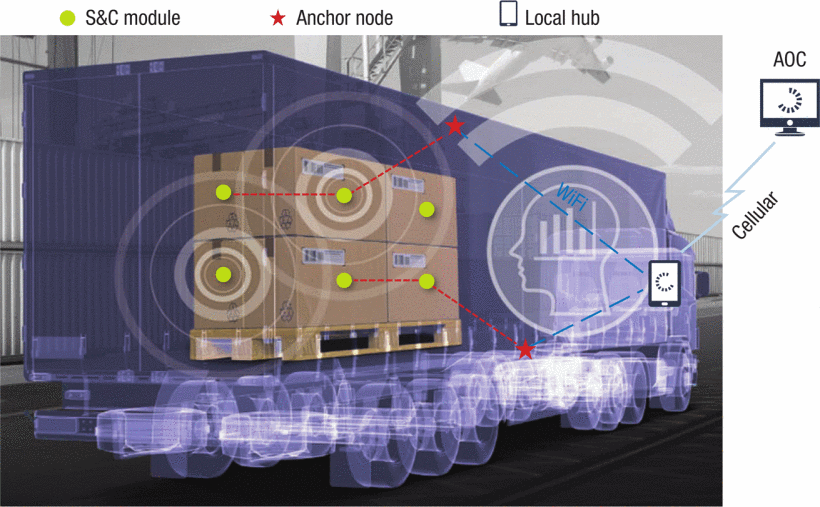May 15, 2019 | IoT Tech Expo 2019, Devices & Systems
Spoiled or contaminated food is responsible for 48 million food-borne illnesses in the US alone. As 40 percent of fresh food is being wasted each year due to this contamination, a research team from Temple University has put forward an inexpensive IoT device to monitor food during transit.
“Food waste due to quality and contamination issues has numerous ill effects, including increased health care costs, supply chain costs and greenhouse gas emissions,” said Krishna Kant, professor and director of Temple’s Industry-University Cooperative Research Center’s Center on Intelligent Storage Systems Research Laboratory. “By improving quality and contamination monitoring, we can impact all of these aspects.”
Following an examination of current transport and distribution (T&D) processes, the team put forward a solution to reduce food waste and remove contaminated or spoiled food. Below, Figure 1 illustrates the proposed sensing and communication (S&C) architecture, including monitoring and centralized data collection systems.
Figure 1: Proposed Food Supply Chain T&D Architecture
Food sensors embedded in intelligent packaging can provide a quality indicator to both retailers and customers, and can come to life in the form of labels that show the accumulated time-temperature history of the product. Rather than adding layers of complexity to the IoT food sensors, the team proposed combining simple sensors with a radio to allow continuous monitoring. This way, online data collection and analytics can be captured in real time.
The S&C module monitors a package’s contents using a contact (chemical) or non-contact (gas sampling or imaging) sensor. The anchor node deployed in the vicinity of the devices enables the transmission of this data to the driver and central logistics team, as seen in Figure 2.
Figure 2: Food Quality S&C Inside a Truck
With this type of architecture in place, the team believes food waste can be drastically reduced and T&D efficiencies can be significantly improved. Everything from intelligent distribution, to proactive contamination detection can be affected by this architecture. In a time when there is high demand for food around the world, largescale changes like this are needed.
“While large retailers and distributors are aggressively pursuing food monitoring infrastructure, they are not yet a point of deploying real-time solutions,” said Krishna. “Our work is more forward looking, and we hope it grounds the next step of ongoing research into inexpensive sensors.”
Those next steps could include applications across industries. As this technology matures, these IoT devices could expand to ensure the safety and quality of other goods such as medical devices and supplies, and temperature-sensitive electronic equipment.
For more information on IoT sensors, visit the IEEE Xplore Digital Library.

